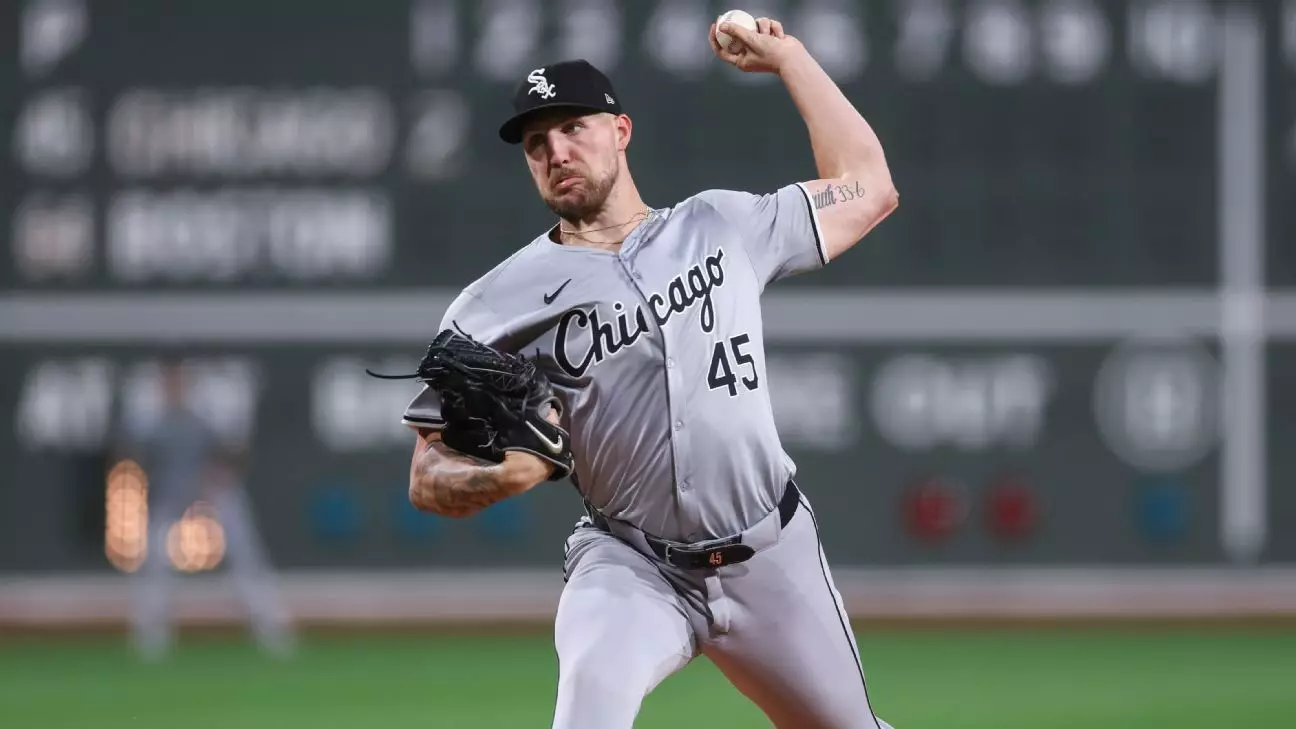The Boston Red Sox are taking a proactive approach as they approach the 2025 baseball season, opting to consider a six-man rotation to bolster their pitching reliability. After a tumultuous previous season that saw their pitching staff stretched to unprecedented limits, the organization is eager to adopt innovative strategies to secure a more competitive standing in the league. In recent comments, Red Sox chief baseball officer Craig Breslow indicated that the team is exploring various options to enhance its pitching depth.
Last season was a true test of endurance for the Red Sox, who faced significant obstacles in their starting rotation. The team entered 2024 with considerable expectations but lost two vital arms early on: they traded away Chris Sale, who later clinched the National League Cy Young Award with the Atlanta Braves, and missed the contributions of Lucas Giolito, who suffered a devastating elbow injury in spring training. The ramifications of these losses manifested in a severely depleted rotation, particularly in the second half of the season, which in turn strained their bullpen and left the Red Sox on the outside of the playoff picture for the third consecutive year.
Breslow’s vision to incorporate a six-man rotation stems from an appreciation of starting pitching depth as an essential ingredient for success. By establishing a larger pool of pitchers, the team hopes to reduce the burden on each individual starter and adapt more effectively to the grueling demands of a full Major League Baseball season. Early discussions among team management suggest that while it may not be necessary to employ a six-man rotation from day one, the flexibility to do so could be immensely beneficial given their challenging schedule.
The offseason has seen the Red Sox actively pursuing solutions to enhance their starting pitching ranks. In a notable trade, the team acquired left-handed pitcher Garrett Crochet from the Chicago White Sox, adding depth to their rotation without compromising their future talent pool. Despite his record of 6-12 in 2024, with a respectable 3.58 ERA over 32 innings, Crochet’s performance offers a glimmer of hope, especially considering the struggles of the White Sox as a whole last season.
In addition to securing Crochet, the Red Sox made strategic free-agent signings by bringing in Walker Buehler and Patrick Sandoval. Buehler, a two-time NL All-Star, boasts significant postseason experience and has showcased flashes of brilliance after recovering from Tommy John surgery. Sandoval, while coming off injury, presents a potentially significant return to form. Breslow highlighted that these acquisitions could significantly upgrade the Red Sox’s pitching capabilities, enhancing a rotation that already includes established names like Giolito and Tanner Houck.
The optimism surrounding the pitching staff is palpable. Breslow acknowledged that the depth now extends beyond just five or six starters, highlighting the potential to have eight or even ten viable pitching options at their disposal. This strategic overhaul aims to ensure that the Red Sox can adequately manage innings and mitigate the risk of injury and fatigue, which have historically plagued many pitchers throughout the rigors of a long season.
However, the strategy does not merely end with pitching; it signifies a holistic approach to team construction. Breslow reiterated the importance of balancing the lineup, particularly as he contemplates the makeup of a left-handed-heavy roster. Accompanying this focus is the need to fortify the bullpen, indicating a dual strategy that emphasizes both starting pitching and relief.
Interestingly, amid the roster changes and strategic considerations, Breslow expressed a clear commitment to keeping young talent as a key part of the team’s future. Specifically, the Red Sox are not currently considering parting ways with 24-year-old first baseman Triston Casas, despite inquiries from rival teams. With a solid yet brief performance last season hampered by injury, the franchise is intent on developing Casas, who represents the kind of dynamic young player essential for long-term competitiveness.
While trading Casas could provide the Red Sox an opportunity to shift Rafael Devers to first base, Breslow firmly stated, “Raffy is our third baseman.” This decision illustrates the management’s belief in Casas’ potential and emphasizes a desire to retain foundational players who will drive the team’s success in the years to come.
Overall, as the Red Sox embark on a promising journey into the 2025 season, their focus on bolstering their pitching staff through strategic trades and signings, combined with a concerted effort to nurture young talent, paints a picture of a franchise poised for resurgence. The proactive measures is indicative of a commitment to not only returning to playoff contention but to adopting a forward-thinking approach to modern baseball.


Leave a Reply